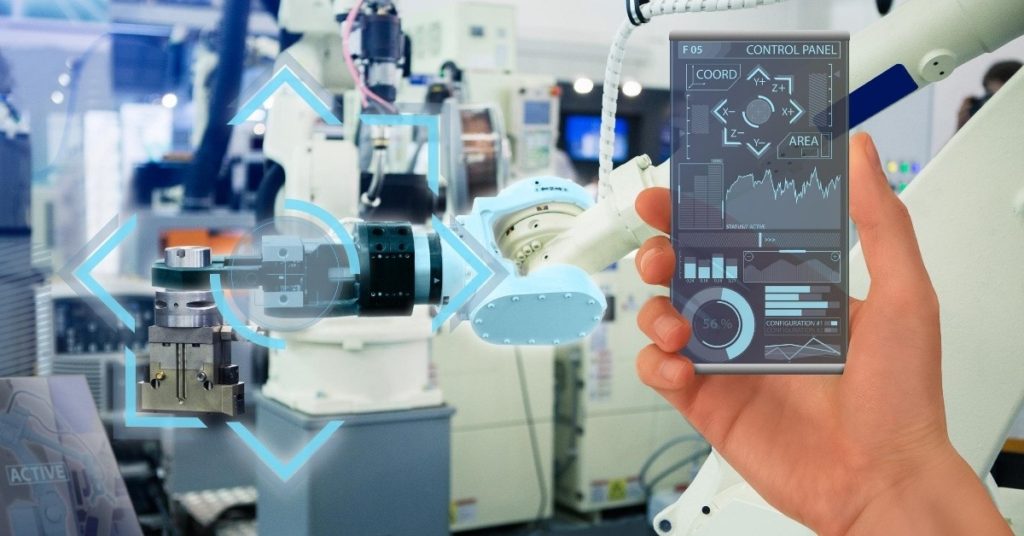OEE is a well-established method of measuring productivity in manufacturing operations. Its origins can be traced back to the 1950s, however, so does it still have relevance today in the Industry 4.0 era?
Not only is OEE still relevant, but its importance has been amplified with the opportunities and challenges created by Industry 4.0 technologies and processes, as well as the ongoing push to develop the Smart Factory of tomorrow.
In-Brief OEE Definition Recap
OEE is a calculation that measures machine availability, performance, and quality. So, a score of 100 percent means you are manufacturing with no downtime and as fast as possible while only producing good products with zero defects.
Getting as close as possible to this 100 percent ideal means you are maximising your facility’s productivity.
The Modern Realities of Manufacturing Facilities
Today, there is an ever-increasing requirement on manufacturing facilities to produce high-quality products while meeting often challenging production timescales.
These requirements are being driven by things like increasing consumer expectations, greater industry competitiveness, and, in relation to sectors like pharmaceuticals and medical devices, the demands of regulators.
With Industry 4.0 technologies, we are also moving closer to mass customisation and batch size of one production capabilities, increasing the need to monitor, improve, and maintain productivity even further.
How OEE Fits into These New Manufacturing Realities
While OEE has been a productivity performance metric for decades, it has never been more important than it is now.
Even with new technologies, systems, platforms, and processes, it remains the best way of benchmarking the productivity of your operation. It can help you identify areas for improvement before giving you a tool to objectively monitor your progress towards an enhanced level of productivity.
OEE in the Industry 4.0 Era
So, OEE as a productivity performance metric is more important today than ever before. We can take this a stage further, though.
This is because Industry 4.0 and Smart Factory technologies enhance OEE effectiveness as a manufacturing productivity measurement. It does this by improving the accuracy of OEE calculations. There are several reasons for this:
- Enhanced levels of equipment integration – equipment systems integration is often the starting point for implementing Industry 4.0 solutions into your production facility. In relation to OEE, integrated systems and equipment improve the value of the data you collect for OEE calculations.
- More data points collected – sensor technologies are another crucial component of solutions that fall under the Industry 4.0 umbrella. These sensor technologies make it possible to collect multiple data points within a machine, section, production line, and overall facility.
- Higher data sampling rates – sensors, networking infrastructures, and cloud computing means you can collect data with sampling rates as high as you need them.
- Improved data quality – sensor technologies and modern data collection and processing systems improve the quality and accuracy of data used in OEE calculations.
- Improved contextualisation and processing of data – this is delivered through big data solutions, machine learning, data dashboards, and more. For example, data can be used by a machine-learning algorithm to move to a predictive maintenance model for machines rather than a scheduled maintenance model, with the driver for this change being an improved OEE calculation.
Proactive OEE Improvements
Industry 4.0-related technologies and solutions also make it possible to improve OEE proactively rather than always being reactionary. This takes OEE calculations beyond real-time monitoring of data into predictive modelling of different scenarios.
The specific technologies that make this possible include digital twin and virtual simulation technologies. With these technologies, you can model different scenarios to analyse their impact on OEE without interrupting the live production line. The results of these models can then be used to make changes that will improve OEE.
Staying Focused on Return on Investment
With all the above, the most important factor is return on investment, whether that is through enhanced profitability by improving productivity, greater competitiveness in the market, or the capability to explore new business and product development opportunities.
This, whenever everything else is said and done, is what OEE is about, i.e. giving you an objective tool to measure return on investment from your Industry 4.0 and Smart Factory initiatives.


Comments are closed.